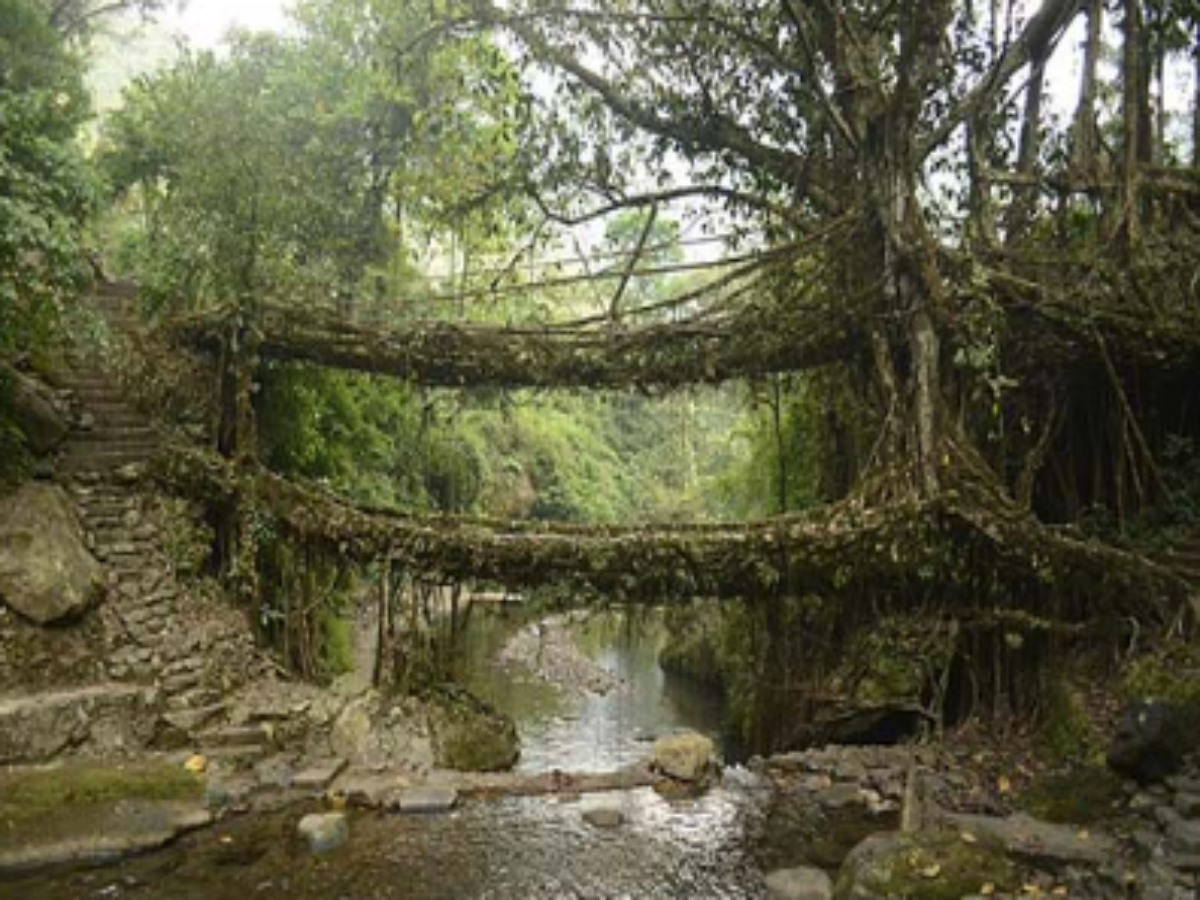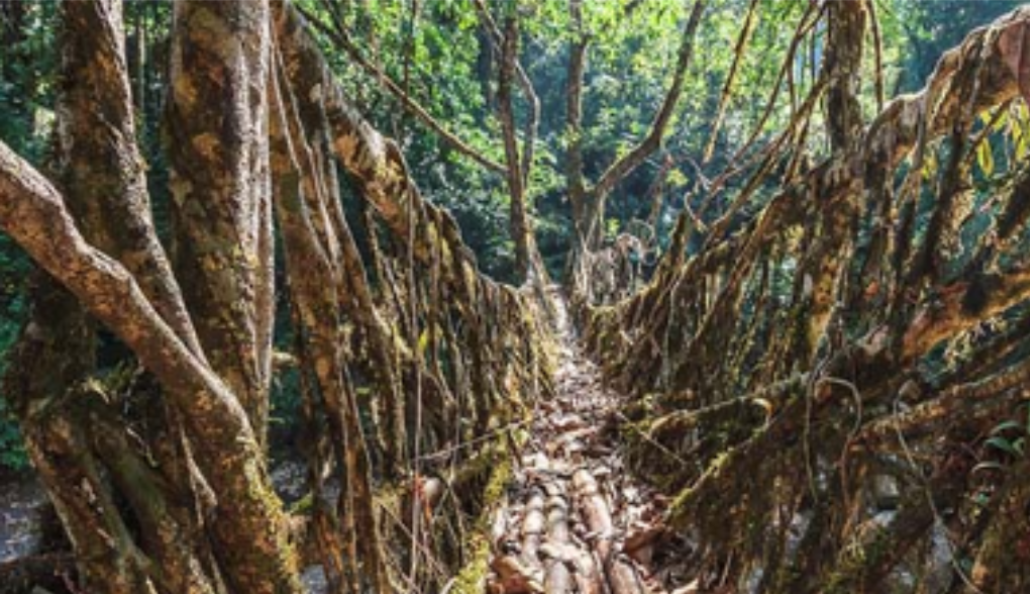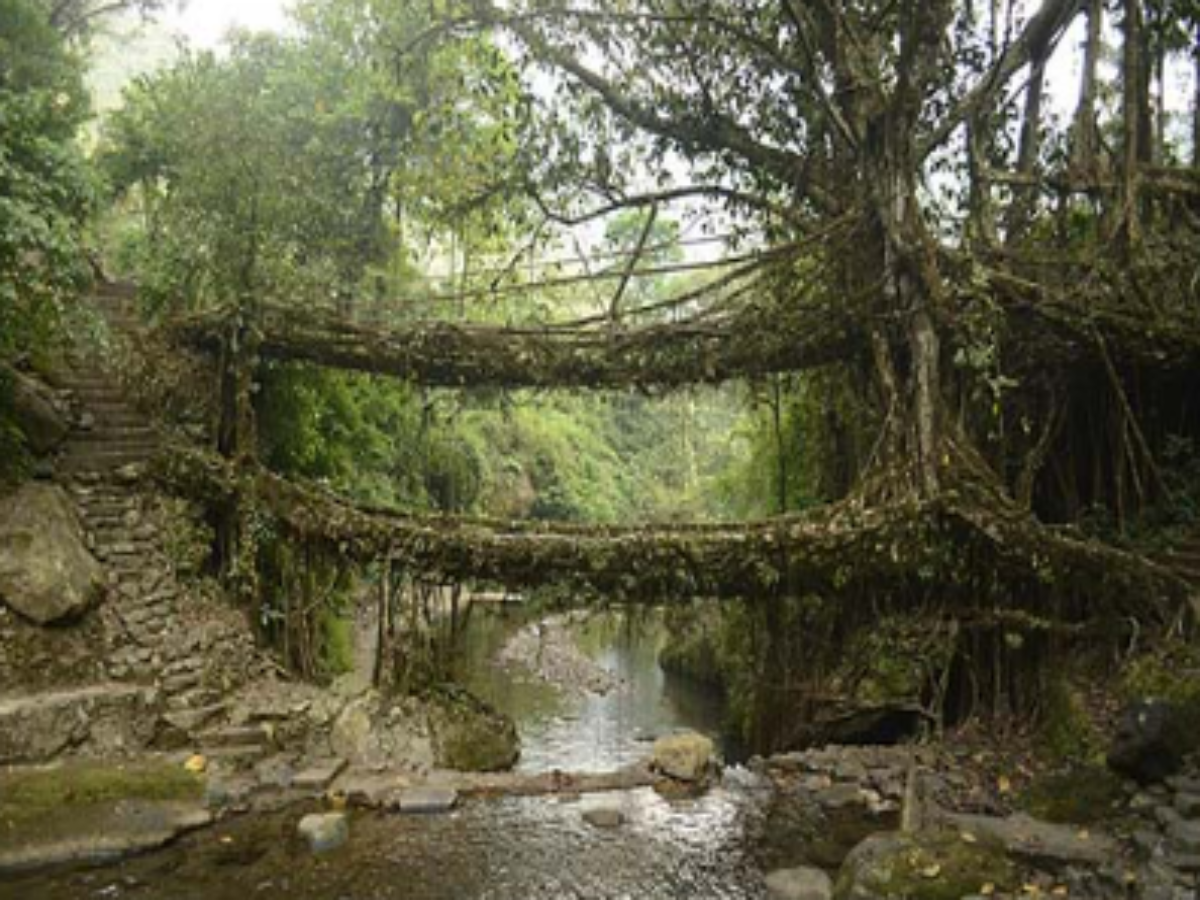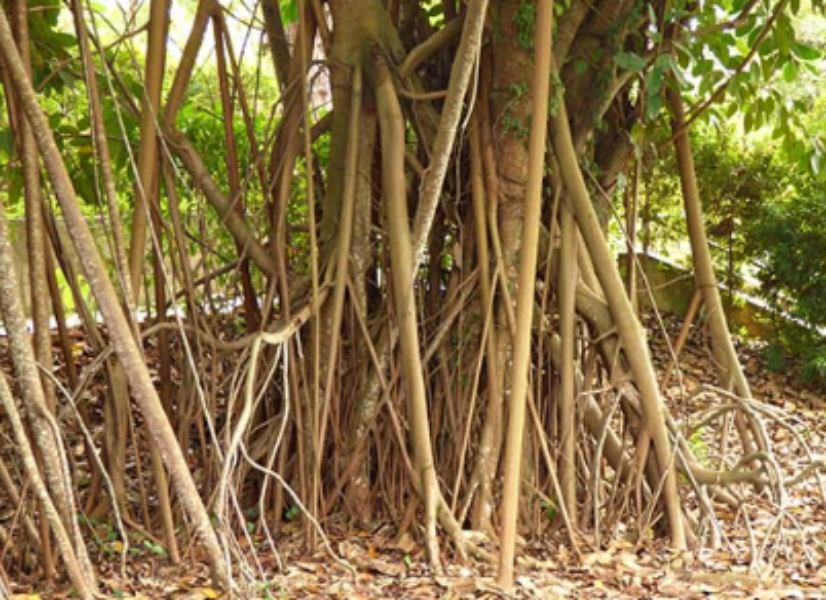State
Tribe Name
Art Type
short description
Shrouded within the thick, greenery-laden jungles of Meghalaya are the Living Root Bridges, which strike one as a wonderful combination of the resilience of nature and creativity of man. These interestingly marvelous natural bridges are called Jing Kieng Jri in local parlance. They are mostly found in the East Khasi Hills and West Jaintia Hills regions. They act as eco-friendly pathways for climbing up and down steep slopes and crossing streams.
Thumbnail

Filter Postion
Left
Filter Background
Off
Theme
Filter Header Image

content
Image

description
Shrouded within the thick, greenery-laden jungles of Meghalaya are the Living Root Bridges, which strike one as a wonderful combination of the resilience of nature and creativity of man. These interestingly marvelous natural bridges are called Jing Kieng Jri in local parlance. They are mostly found in the East Khasi Hills and West Jaintia Hills regions. They act as eco-friendly pathways for climbing up and down steep slopes and crossing streams.
Image Mode
landscape
Image

description
Since the region has an extended wet season, wooden or metal bridges would decompose far too fast; therefore, the Khasis developed a different eco-friendly alternative, making use of the roots of the Ficus elastica tree. The process of creating these root bridges is straightforward: a tree is planted on both sides of the river, the aerial roots are then carefully directed across the river, and the roots are entwined using the trunks of areca palm trees, bamboo, and stones as temporary scaffolding. Over 10–15 years, the aerial roots thicken naturally, establishing a self-sustaining, durable structure that requires very little maintenance. Some of these root bridges are believed to be over 500 years old. They have endured the most extreme weather events.
Image Mode
landscape
Image

description
These bridges reflect a solid relationship the Khasi have with nature, their skills, history, and ways to survive. However, as modernization takes place, this construction technique is quickly disappearing. Locals and the state government are supporting the protection of this important tradition. The Living Root Bridge Cultural Landscapes of Meghalaya were inscribed to UNESCO's tentative list of World Heritage Sites in March 2022 with a focus on their significance as both a cultural tradition and an ecological wonder.
Image Mode
landscape
promoted
Off
Verified
Off
